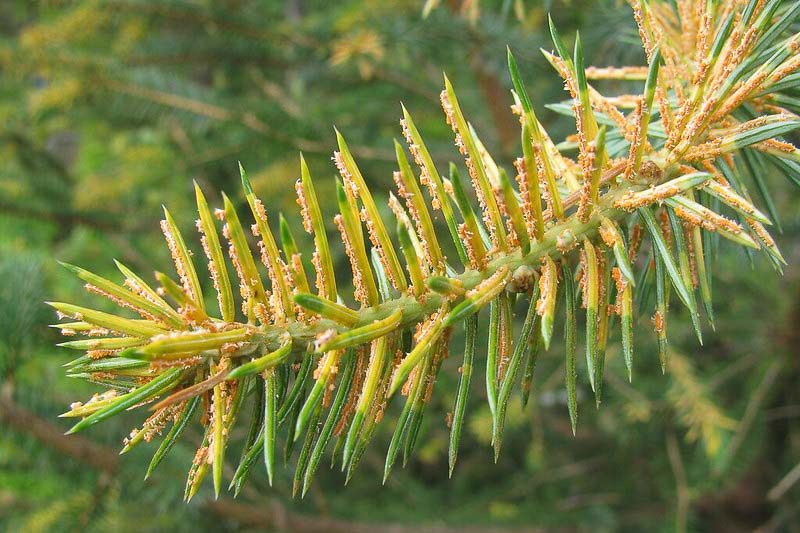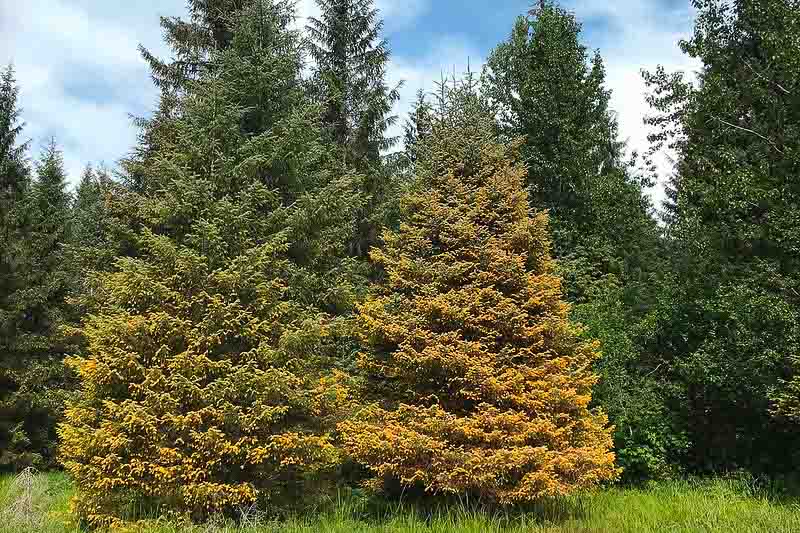How to Identify, Prevent, and Treat Needle Rust Disease
Needle rust is a plant disease caused by rust fungi, a large and diverse group of pathogens known for the characteristic orange or reddish rust-like spores they produce. These fungi primarily affect coniferous trees, and the disease is named “needle rust” because it predominantly affects these trees’ needles or leaves.
There are many types of needle rusts, each caused by different rust fungi species. Each species targets different host plants, although there can be significant overlap.
Please note that the specific hosts can vary significantly within each of these genera of fungi. Rust fungi are known for their complex life cycles and host interactions, and these are just general trends. Always consult local resources or extension services for the most accurate and location-specific information.
As mentioned above, these rust issues primarily affects coniferous trees. This includes a wide range of species, such as pine, spruce, fir, hemlock, larch, and others. However, certain rust species have a very narrow host range and only infect one or a few related species.
The symptoms can vary depending on the species of rust and the host plant but often include yellowing or browning of needles, premature needle drop, and the presence of orange or red rust-like spores on the needles. In severe cases, the rust can cause significant defoliation and reduced growth, although it is typically not lethal to the tree.

Needle rust is caused by rust fungi, which are spread by wind-blown spores. These fungi require wet conditions to infect plants, so this disease is often more common in areas with high rainfall or humidity. Some rust species also require an alternate host plant to complete their life cycle, and the disease can be more prevalent in areas where these hosts are common.
Needle rust can cause significant damage to conifers, particularly in nurseries or plantations where trees are closely spaced. The disease can reduce growth and aesthetic value and in severe cases, can cause defoliation and dieback. Detection of these rust issues is usually based on visual symptoms, such as the characteristic rust-like spores or changes in needle color.

Preventing needle rust involves several strategies:
Remember that the exact strategy may depend on the specific rust species, tree species, and local conditions. Always consult with local resources for the best approach.
Create a membership account to save your garden designs and to view them on any device.
Becoming a contributing member of Gardenia is easy and can be done in just a few minutes. If you provide us with your name, email address and the payment of a modest $25 annual membership fee, you will become a full member, enabling you to design and save up to 25 of your garden design ideas.
Join now and start creating your dream garden!
Create a membership account to save your garden designs and to view them on any device.
Becoming a contributing member of Gardenia is easy and can be done in just a few minutes. If you provide us with your name, email address and the payment of a modest $25 annual membership fee, you will become a full member, enabling you to design and save up to 25 of your garden design ideas.
Join now and start creating your dream garden!